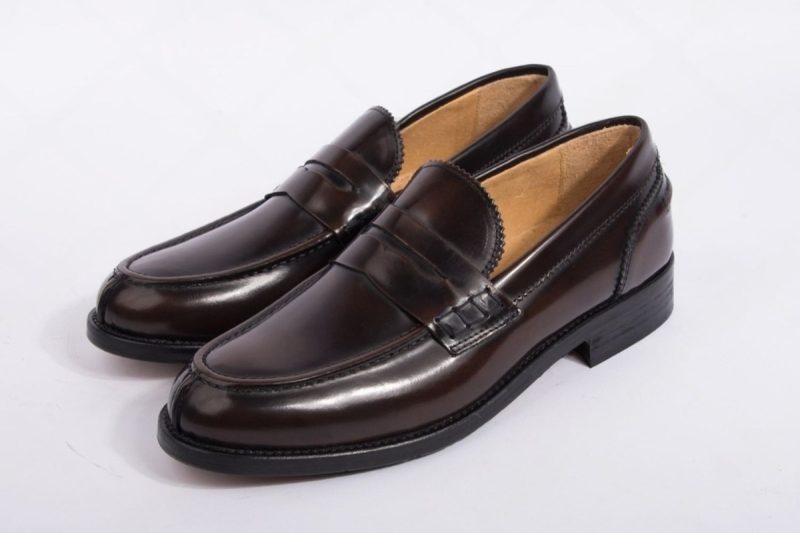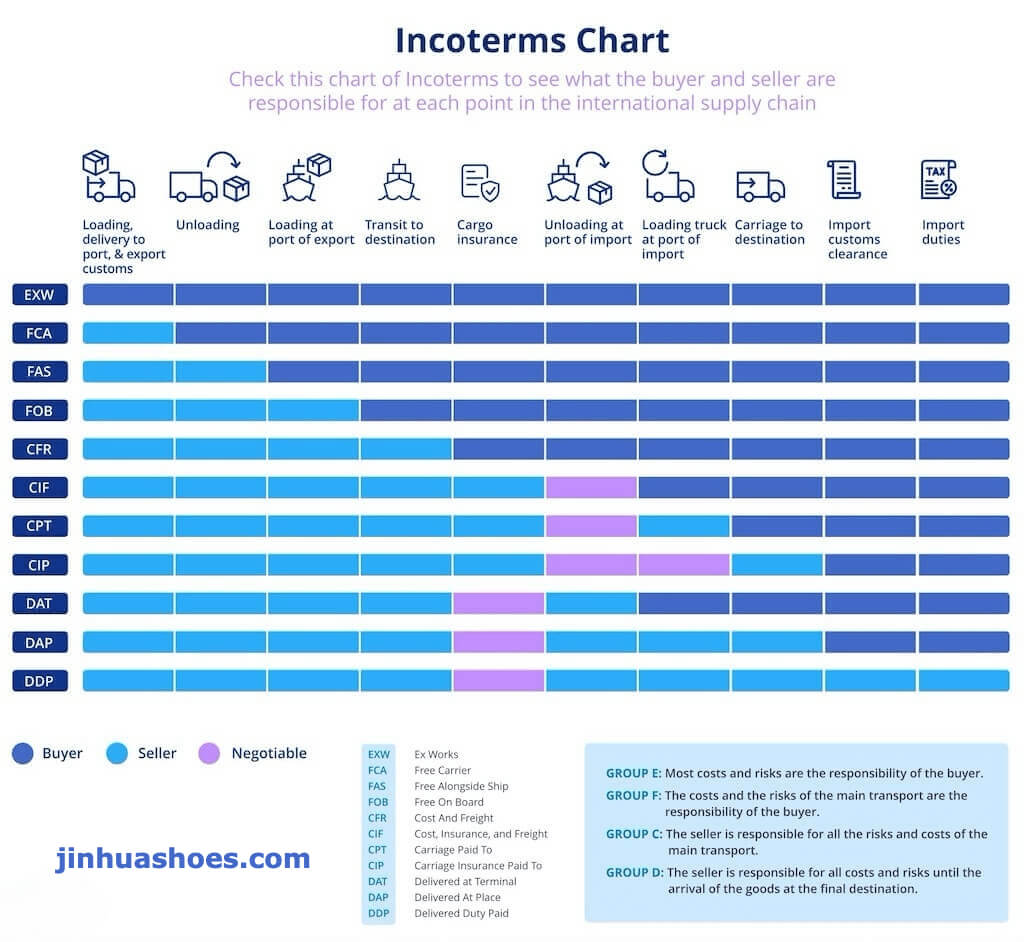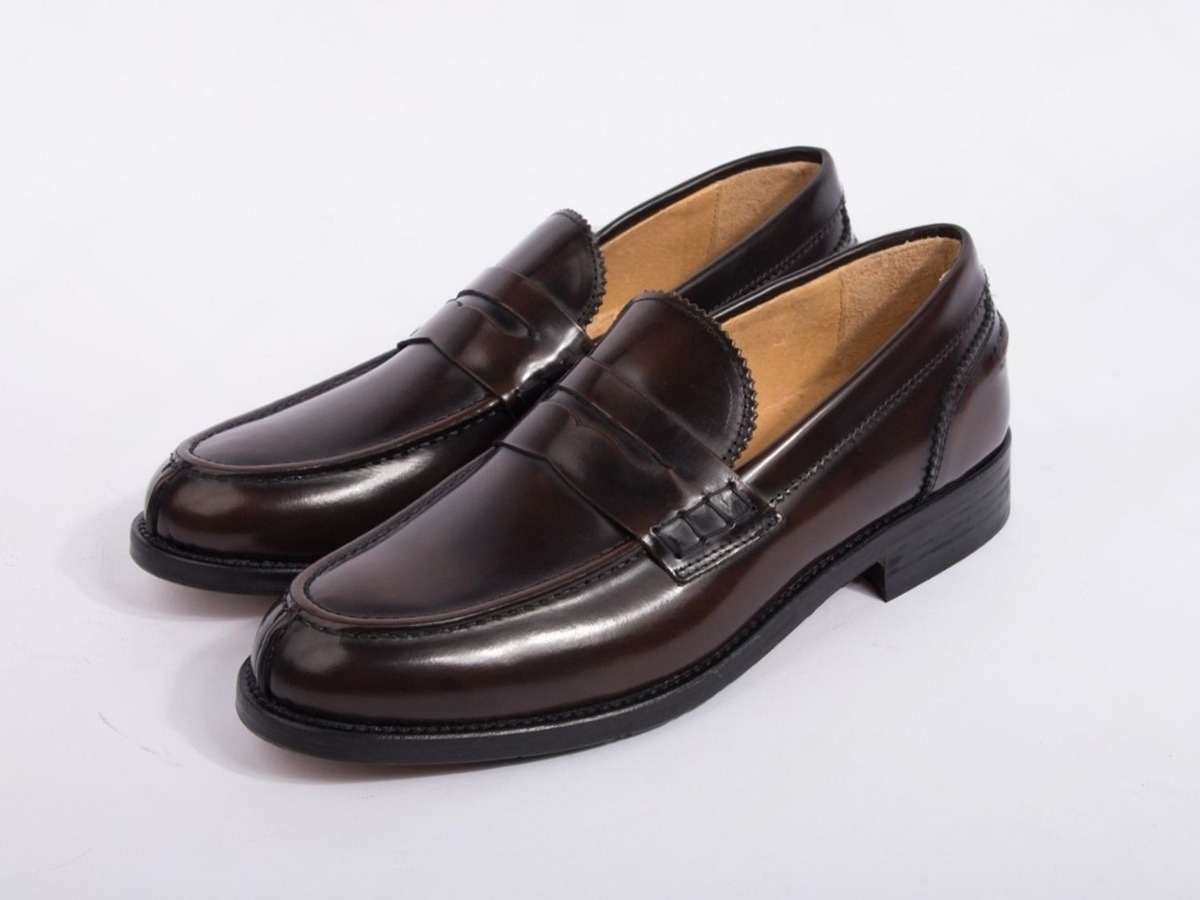As a footwear brand founder, a wholesale buyer, or a product developer, you’re on the front lines of a major shift in the men’s footwear market. For decades, the dress shoe category was defined by aesthetics alone. Comfort was an afterthought, a luxury, or an outright sacrifice. That era is over.
In 2025, comfort is not a feature; it is the feature. The modern professional landscape of hybrid work, extensive travel, and blurred lines between formal and smart-casual has created a non-negotiable demand: a shoe that looks like a classic Oxford but feels like a high-performance sneaker.
But “comfort” is a dangerously vague term. The internet is flooded with consumer reviews and “best of” lists that are useless for a professional buyer. Your job isn’t to find a shoe that feels good for five minutes. Your job is to source and develop a product that delivers sustained ergonomic support, holds up over time, and ultimately enhances your brand’s reputation for quality.
This guide is not another consumer review. This is an insider’s strategic analysis for expert buyers. We will dissect the core metrics that define true comfort in men’s comfortable dress shoes, explore the inherent comfort profiles of different styles, and provide a framework for making the right sourcing decisions for your brand.
Beyond the Insole: Defining the Core Metrics of All-Day Comfort
True all-day comfort is not about a single soft layer of foam. It’s a sophisticated system of design, material science, and engineering working in harmony. To evaluate a dress shoe like a pro, you need to look beyond the marketing and analyze these five critical metrics.
1. Advanced Arch Support: The Foundation of Stability
The arch is the foot’s natural shock absorber. A dress shoe that neglects it is just a good-looking liability. Basic, flat footbeds lead to over-pronation, foot fatigue, and long-term discomfort. Top-tier dress shoes with arch support in 2025 feature much more.
What to look for: Look for a dynamic, contoured footbed, not a flat one. The best designs use semi-rigid materials like molded PU or even carbon fiber shanks to provide stability that prevents the arch from collapsing during a long day of walking.
The Insider Question to Ask a Manufacturer: “What is the density of the arch support material, and is the last designed with a specific arch profile (e.g., neutral, high) in mind?”
2. Multi-Density Cushioning: The Science of Shock Absorption
A single layer of foam is a recipe for failure. It will “pack out” and lose its cushioning properties over time. The gold standard today is a multi-density cushioning system.
What to look for: A layered construction is key. This often means a soft top layer of memory foam for that initial “wow” comfort, a firmer, high-rebound middle layer (like a quality PU or advanced EVA) for support and energy return, and a durable bottom layer for stability. The best cushioned dress shoes for men often have targeted gel pods or extra foam in the heel strike zone.
The Insider Question to Ask a Manufacturer: “Can you provide a cross-section diagram or spec sheet for the midsole and insole construction? What is the energy return percentage of the primary cushioning foam?”
3. Material Breathability: Winning the Battle Against Heat and Moisture
A sweaty foot is an uncomfortable foot. Breathability is a non-negotiable metric for all-day wear.
What to look for: Full-grain leather is naturally breathable. Look for uppers made from high-quality leather and, crucially, a full leather lining. A shoe with a beautiful leather upper but a cheap synthetic lining is a sweat trap. For all-weather performance, the integration of a waterproof yet breathable membrane like Gore-Tex is a premium feature that customers are increasingly willing to pay for.
The Insider Question to Ask a Manufacturer: “What is the material composition of the lining? For your waterproof models, what is the MVTR (Moisture Vapor Transmission Rate) of the membrane used?”
4. Lightweight Construction: Reducing Fatigue with Every Step
The weight of a shoe has a direct impact on energy expenditure. A heavy, clunky dress shoe is a literal drag. Modern engineering focuses on shedding grams without sacrificing durability.
What to look for: The biggest weight savings come from the outsole. Look for lightweight alternatives to solid rubber, such as expanded EVA (XL Extralight is a well-known brand) or proprietary lightweight rubber compounds. Hollowing out non-critical areas of the outsole is another clever engineering trick.
The Insider Question to Ask a Manufacturer: “What is the total weight of a sample size 9 shoe? What material is the outsole, and what is its specific gravity?”
5. True Wide-Fit Options: Serving an Underserved Market
A huge portion of the male population has wider feet, yet they have been ignored by the traditional dress shoe industry for decades. Offering wide-width dress shoes is not just an inclusive move; it’s a massive market opportunity.
What to look for: “Wide fit” isn’t enough. Look for brands that offer multiple, specific widths (e.g., E, EE). This indicates that they have invested in developing different lasts (the foot-shaped molds shoes are built on), rather than just adding a bit more material to the upper.
The Insider Question to Ask a Manufacturer: “Do you have dedicated lasts for wide (E/EE) widths, or are your wide shoes made on a standard D-width last?”
Style vs. Structure: The Inherent Comfort Profile of Each Dress Shoe
The style of a dress shoe is not just an aesthetic choice; its very construction dictates a baseline level of comfort and flexibility. As a buyer, understanding these inherent profiles is key to selecting the right product for your target customer.
Oxfords: The Formal Foundation
The Oxford is defined by its “closed lacing” system, creating a sleek, formal look.
Inherent Comfort Profile: Traditionally the most rigid and least forgiving. The closed lacing offers little room for adjustment over a high instep. This is not the ideal style for all-day walking comfort unless it has been specifically engineered with a flexible sole and advanced cushioning.
Best for: Boardrooms, formal events, and professional environments where appearance is paramount and extensive walking is minimal.
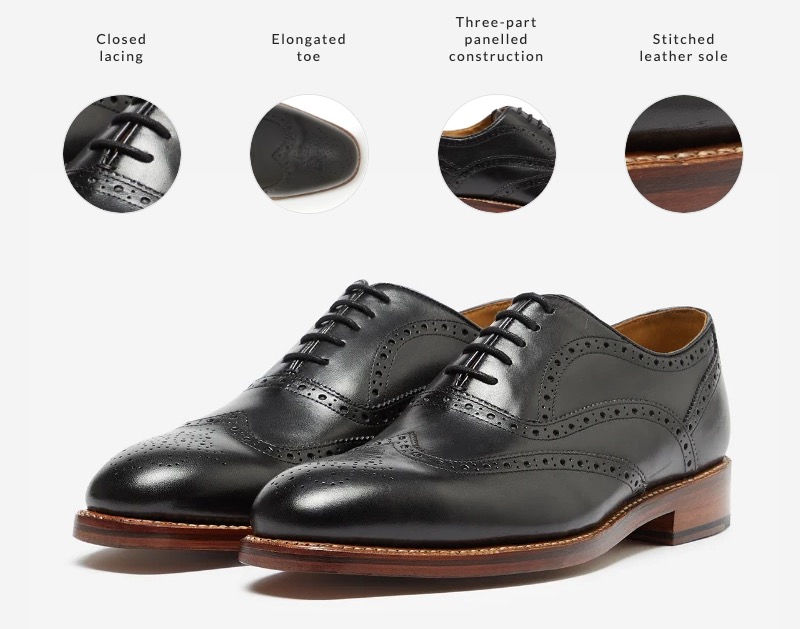
Derbies: The Versatile Workhorse
The Derby features an “open lacing” system, making it inherently more adaptable.
Inherent Comfort Profile: Generally more comfortable than an Oxford. The open laces allow for more adjustment, accommodating a wider range of foot shapes and high insteps. This makes the Derby shoe a superior platform for creating a truly comfortable all-day dress shoe.
Best for: The modern office, business casual settings, and daily professional wear. This is the sweet spot for blending style and comfort.
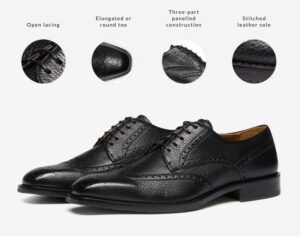
Loafers: The King of Convenience
The classic slip-on. Styles range from the formal Horsebit to the casual Penny Loafer.
Inherent Comfort Profile: High perceived comfort due to their ease of wear. However, the lack of a fastening system can lead to an insecure fit, causing heel slippage or requiring the toes to “grip” while walking, which leads to fatigue. The key to a comfortable loafer is a perfect fit and a well-designed heel cup.
Best for: Travel (especially airports), smart-casual offices, and warm weather.
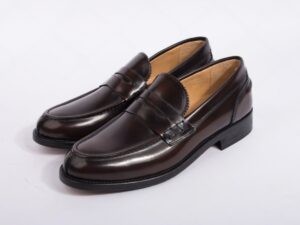
Dress Boots: Support Meets Style
Ankle-high boots in styles like the Chelsea (elastic sides) or lace-up Derby boots.
Inherent Comfort Profile: Can offer superior comfort due to added ankle support and often more robust outsoles and cushioning. A high-quality Chelsea boot in leather can be one of the most comfortable and versatile shoes a man can own.
Best for: Colder climates, travel, and individuals who prefer the secure feeling of ankle support. Excellent for bridging the gap between casual and formal.
The Buyer’s Matrix: Matching the Shoe to the Customer’s Life
The “best” comfortable dress shoe doesn’t exist. The best shoe is a highly personal choice based on the customer’s use case and specific foot needs. As a brand, your goal is to offer a curated selection that solves real-world problems for your target demographics.
Use Case #1: The Daily Office Professional
Needs: All-day cushioning for moderate walking and long periods of sitting. Breathability is key.
Top Styles: Derbies, comfortable Loafers.
Key Tech: Multi-density PU insoles, leather lining, flexible outsoles.
Use Case #2: The Road Warrior (Sales, Conferences)
Needs: Maximum shock absorption, superior energy return, and lightweight construction to fight fatigue.
Top Styles: Highly-engineered Derbies, sneaker-dress shoe hybrids.
Key Tech: Athletic-style EVA midsoles, dynamic arch support, gel heel pods, waterproof membranes.
Use Case #3: The Man with Specific Foot Needs
Needs: This is where you can truly build brand loyalty.
Wide Feet: Offer true E and EE widths built on dedicated lasts.
Plantar Fasciitis: Prioritize shoes with excellent arch support and deep, cushioned heel cups.
Orthotic Users: Offer a collection with removable insoles to accommodate custom orthotics. This is a hugely valuable and often overlooked feature.
Frequently Asked Questions
Q1: This partnership approach sounds great, but I’m concerned about protecting my unique design. What is the actual first step to start a conversation safely?
A: That’s the most important question, and you’re right to be cautious. The process is built on mutual verification. The very first step, before you share any sensitive designs, is for both parties to sign a legally binding, China-specific NNN (Non-Use, Non-Disclosure, Non-Circumvention) agreement. Once that’s in place, we can have a high-level technical discussion about your project’s complexity. This allows us to confirm our capabilities without you having to reveal your core intellectual property. We only proceed when both sides are 100% confident.
Q2: The article warns against chasing the lowest price. How can I be sure I’m getting a fair price that reflects true quality, not just a high margin for the factory?
A: Transparency is the only answer here. A trustworthy partner will provide a “no surprises” quote. After reviewing your tech pack, we provide a detailed cost breakdown that clearly separates the per-unit cost (FOB) from any one-time costs, such as new mold development. We explain the “why” behind the costs, linking them to specific material grades or construction techniques. A fair price isn’t the lowest number; it’s an honest number that reflects the quality you expect and the value we deliver.
Q3: This deep, collaborative partnership sounds like it’s for big brands. How does this approach work for a smaller, growing brand with lower initial order volumes?
A: This is a crucial point. A true partnership model is actually more beneficial for a growing brand. We were a growing business once too, and we understand that flexibility is everything. Instead of rigid, high MOQs, we focus on finding solutions. This might mean starting with a more limited run on a core style or using materials we can source efficiently for smaller quantities. The goal is to build a long-term relationship. We are structured to grow with you, from your first test order to your future global production runs.
Final Thoughts: It’s All About the Partnership
I hope this guide has pulled back the curtain on what it truly takes to build a successful and comfortable men’s dress shoe line. It’s less about finding a factory and more about finding a partner who shares your obsession with the details, because that’s what separates a good shoe from a great one.
This philosophy is at the core of everything we do at Jinhua Shoes. It’s why we blend decades of traditional craftsmanship with modern, data-driven ergonomic science. It’s why our veteran QC team protects your brand’s reputation as if it were our own. And it’s why we’ve become a trusted R&D and manufacturing partner for brands across the globe.
Ultimately, a great manufacturing partner doesn’t just make your products; they make your entire process smoother, smarter, and more successful.
If you’re looking for a partner who is as passionate about the engineering of comfort as you are about your brand, I would genuinely love to listen.
Got a project in mind? Let’s turn it into reality.
Send your project details to our expert team. You won’t get a generic sales reply; you’ll get personalized, expert feedback on your project’s materials, construction, and market potential.
📧 Email: sales@jinhuashoes.com
(You’ll get personalized, expert feedback within 12 business hours.)
